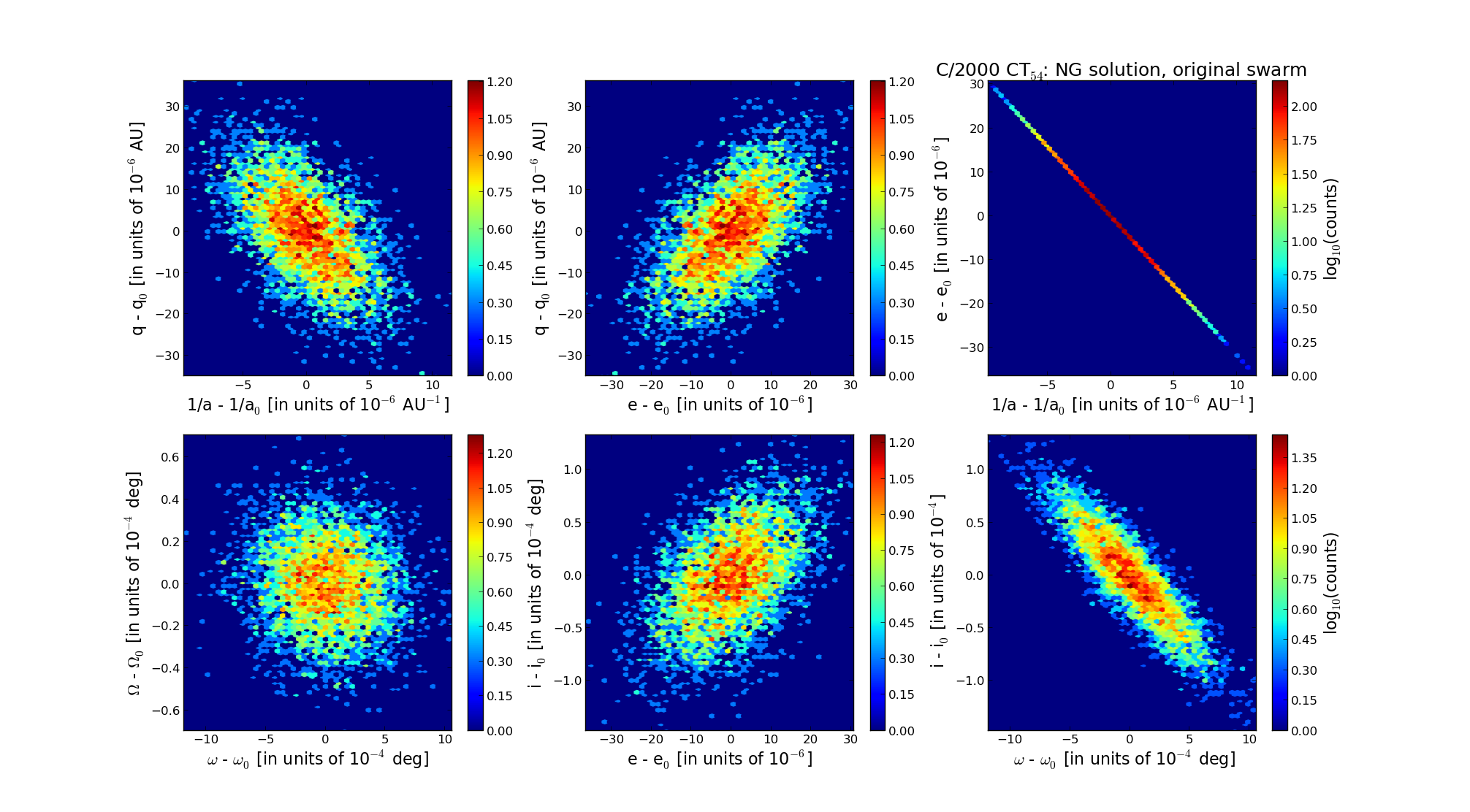| Solar System Dynamics & Planetology Group |
 |
C/2000 CT54 LINEAR |  |
| Solar System Dynamics & Planetology Group |
 |
C/2000 CT54 LINEAR |  |
| number of observations | 210 |
| number of residuals | 417 |
| data interval | 1999 Mar. 21 — 2004 Jan. 17 |
| rms [arcsec] | 0.75 |
| orbit quality class | 1a+ |
| Epoch (TT) | 20010620.0 | = JD 2452080.5 |
| time of perihelion passage (TT) | 20010619.500943 | ± 0.000247 |
| perihelion distance | 3.15599443 | ± 0.00000824 |
| eccentricity | 0.99861902 | ± 0.00000833 |
| argument of perihelion [deg] | 272.649348 | ± 0.000048 |
| longitude of the ascending node [deg] | 18.964790 | ± 0.000019 |
| inclination [deg] | 49.206633 | ± 0.000042 |
| inverse semimajor axis [10-6 au-1] | 437.57 | ± 2.64 |
| Nongravitational parameters [10-8 au/day2] | A1 = 778.0 ± 53.6 | A2 = 51.5 ± 25.9 | A3 = 0.0 (assumed) |

| Epoch (TT) | 16980827 | |
| time of perihelion passage (TT) | 20010620.058041 | ± 0.001270 |
| perihelion distance | 3.16327619 | ± 0.00001040 |
| eccentricity | 0.99976954 | ± 0.00000967 |
| argument of perihelion [deg] | 272.560232 | ± 0.000318 |
| longitude of the ascending node [deg] | 18.986874 | ± 0.000019 |
| inclination [deg] | 49.142424 | ± 0.000041 |
| inverse semimajor axis [10-6 au-1] | 72.86 | ± 3.06 |
| Epoch (TT) | 23100601 | |
| time of perihelion passage (TT) | 20010620.167758 | ± 0.001071 |
| perihelion distance | 3.15378664 | ± 0.00001050 |
| eccentricity | 0.99815414 | ± 0.00000798 |
| argument of perihelion [deg] | 272.617606 | ± 0.000300 |
| longitude of the ascending node [deg] | 18.898590 | ± 0.000019 |
| inclination [deg] | 49.175381 | ± 0.000041 |
| inverse semimajor axis [10-6 au-1] | 585.28 | ± 2.53 |